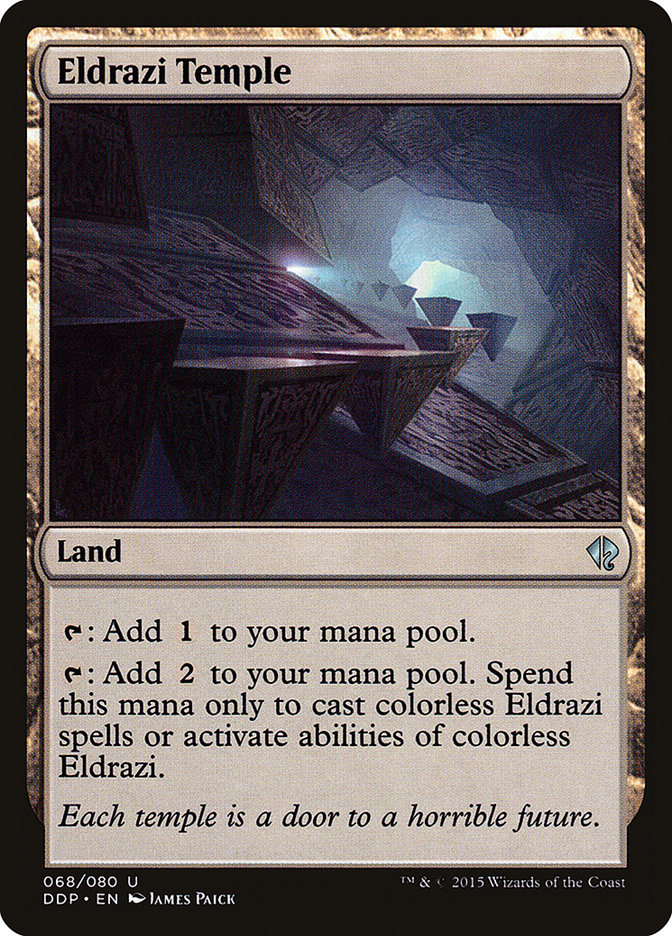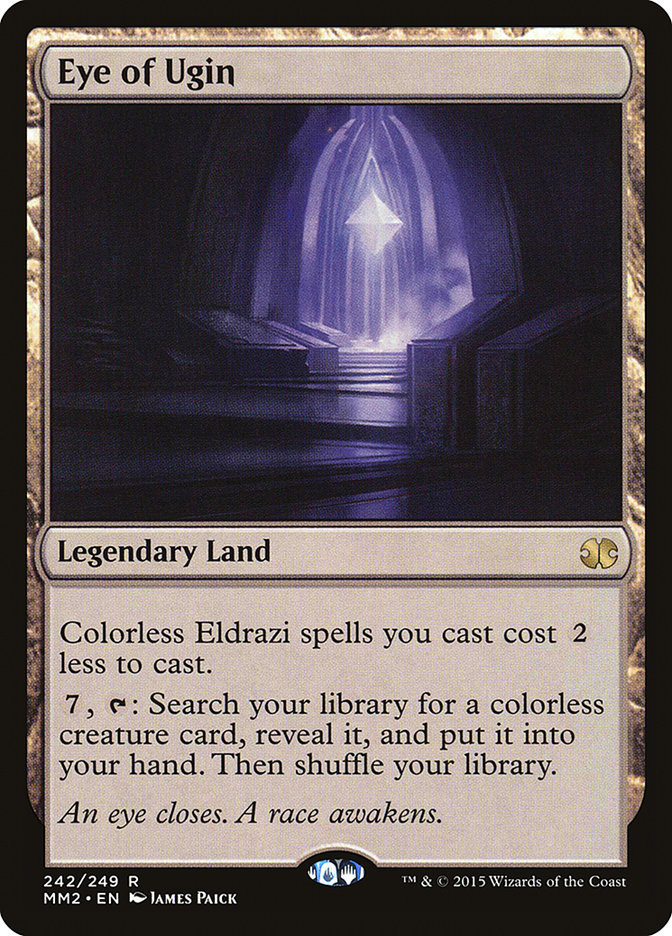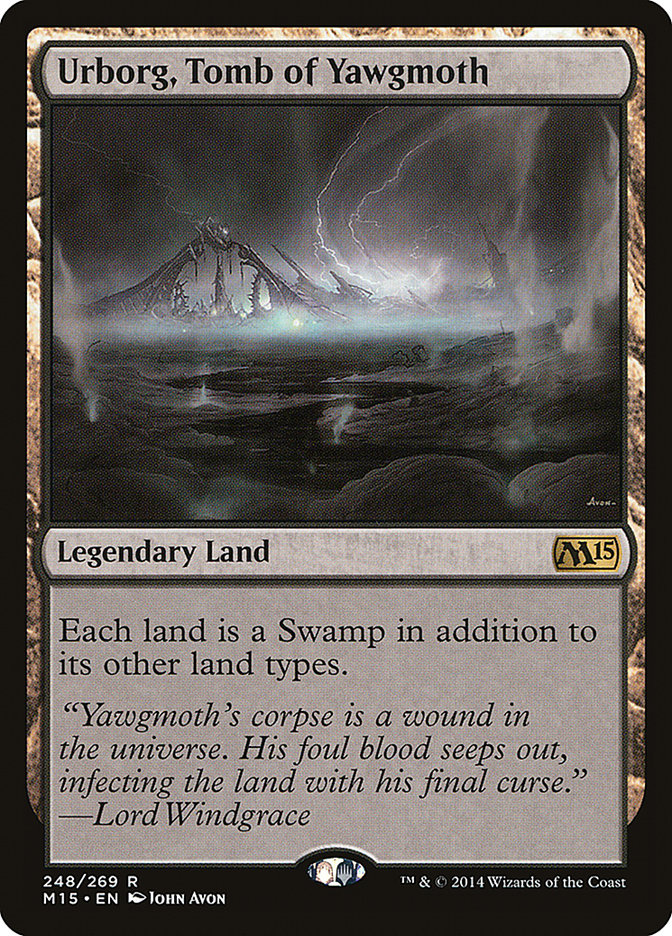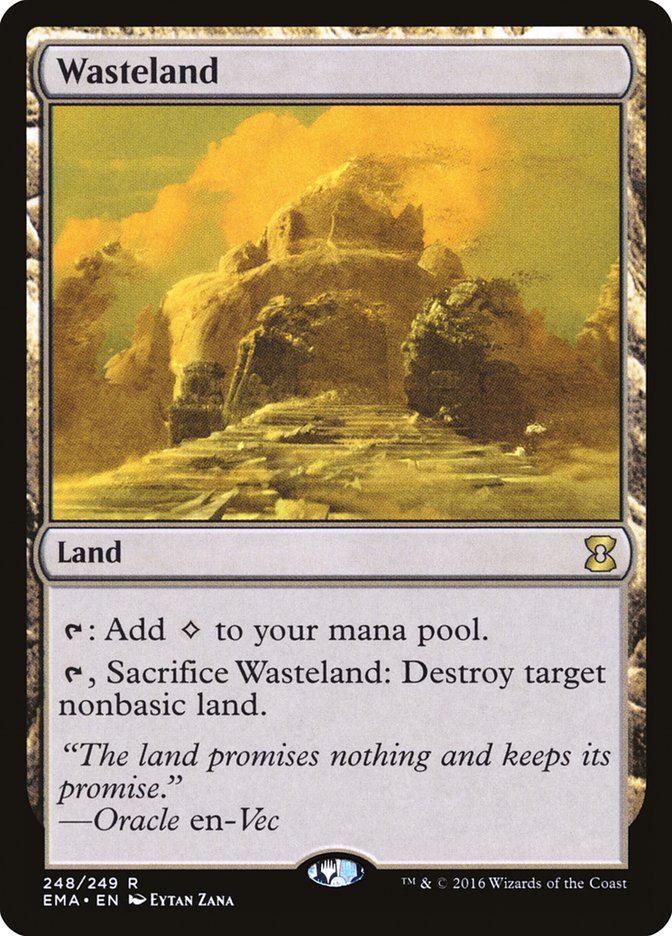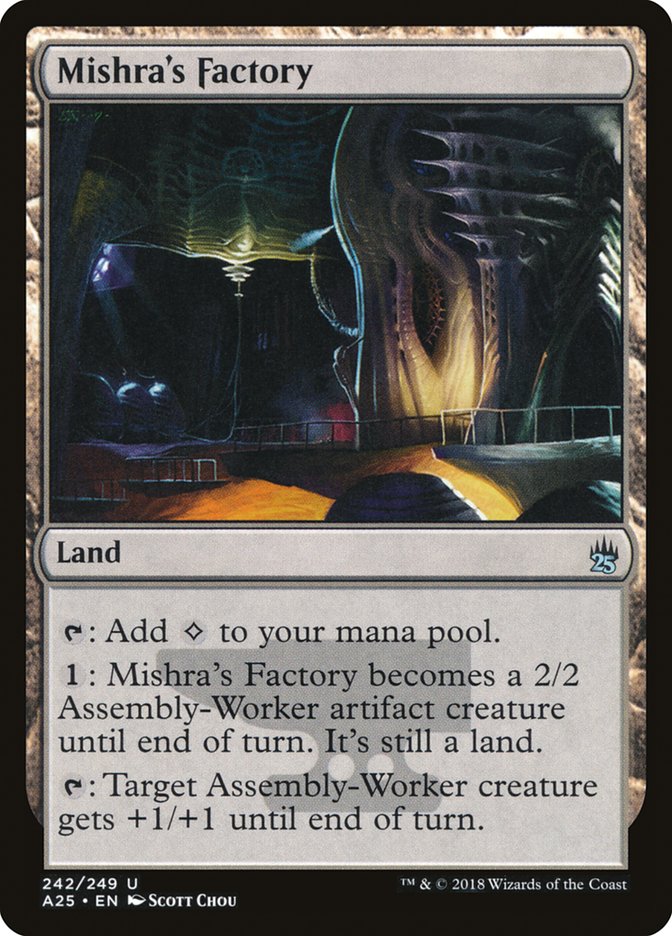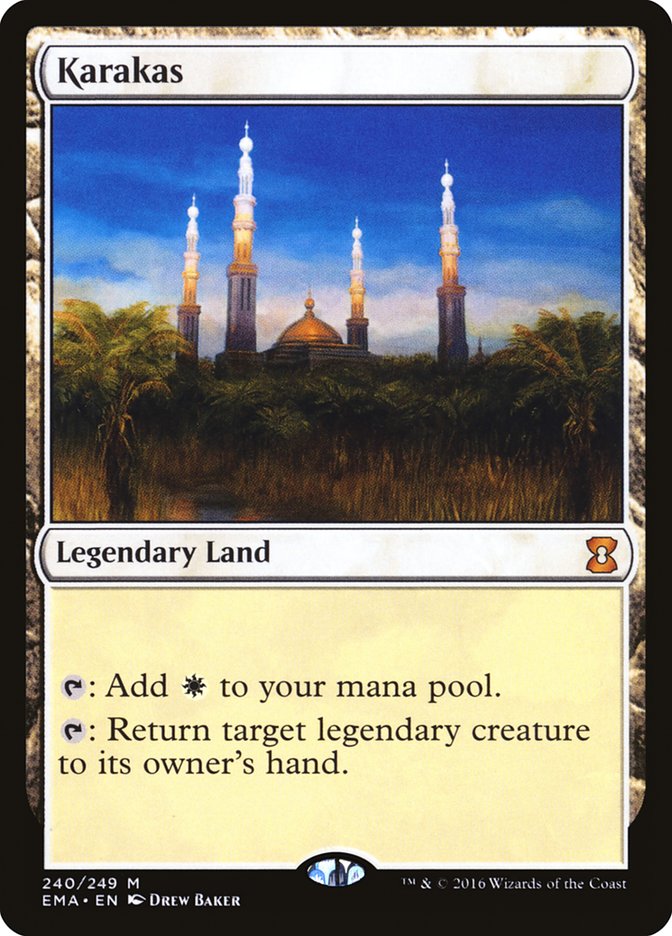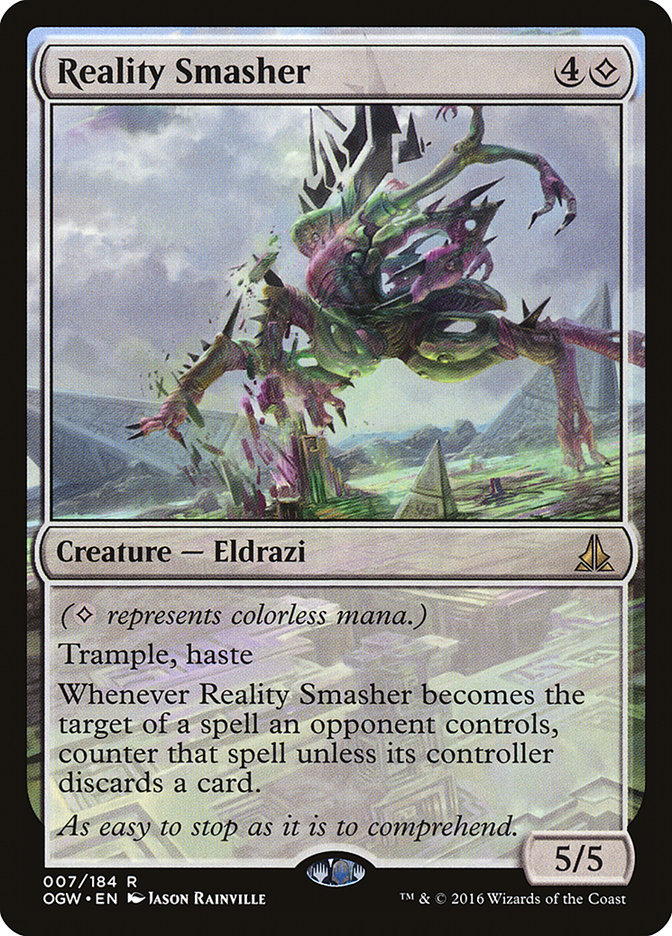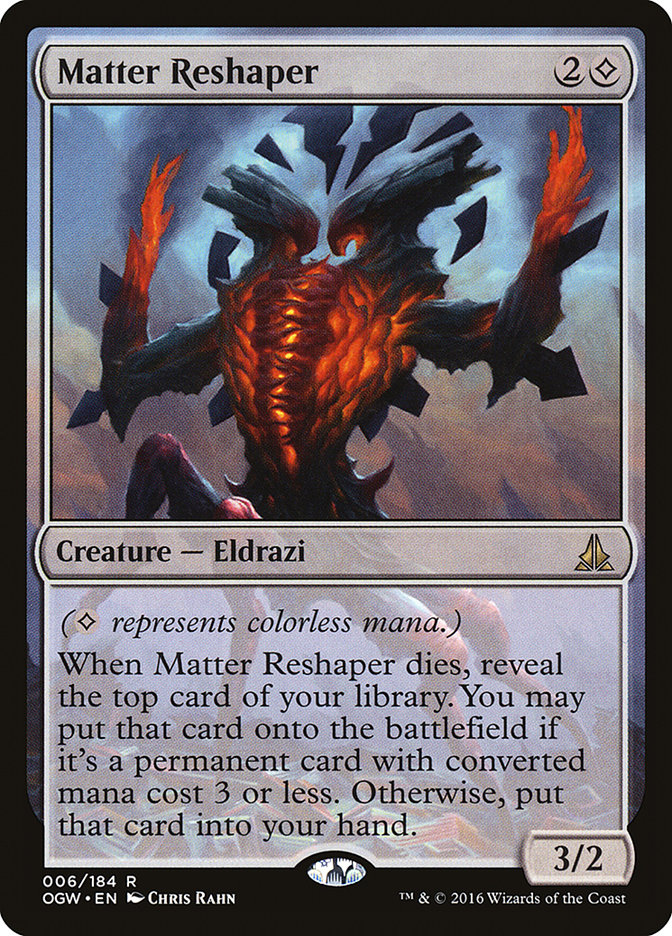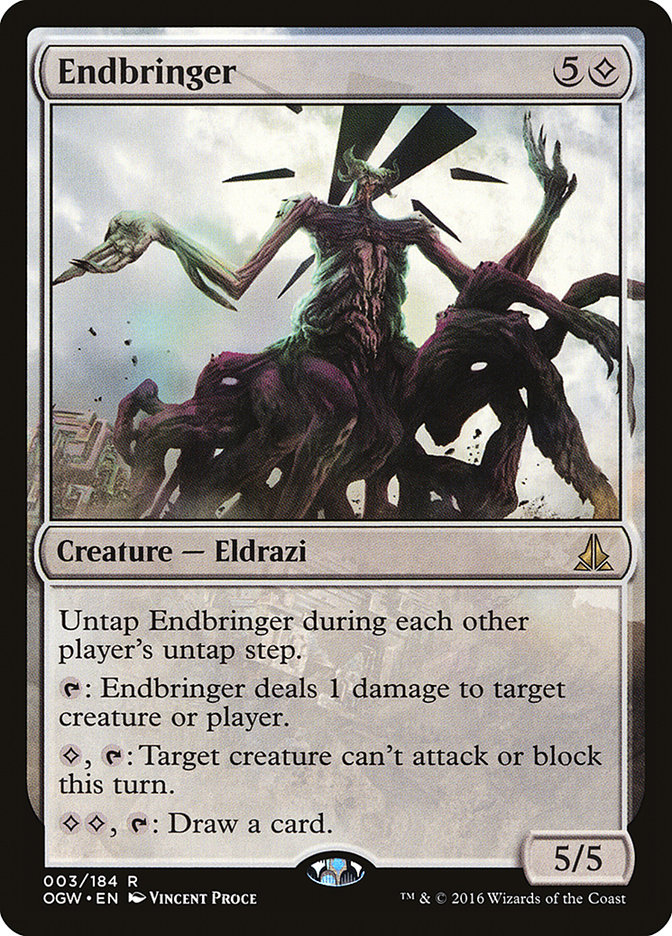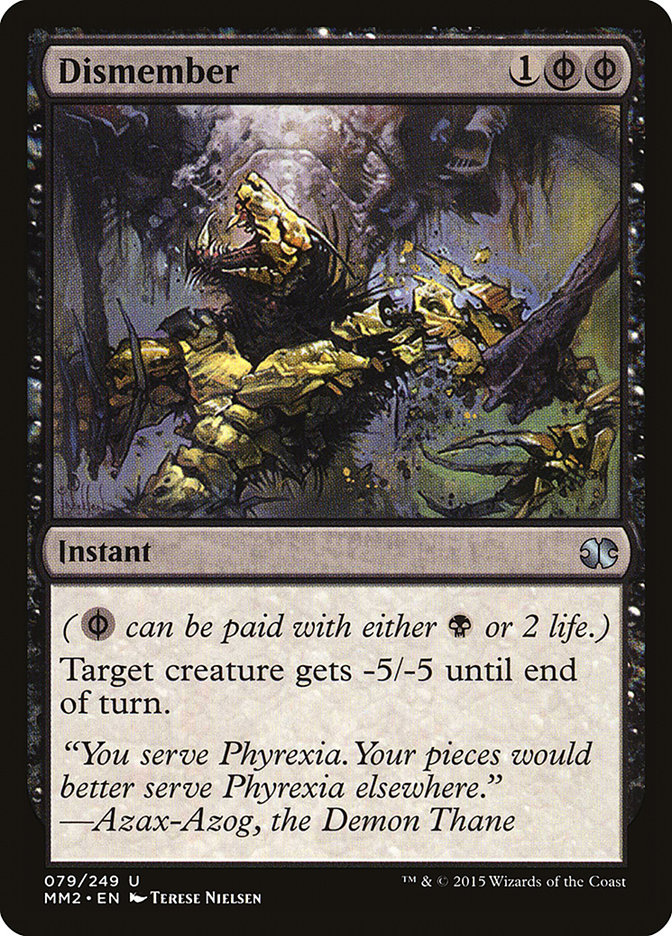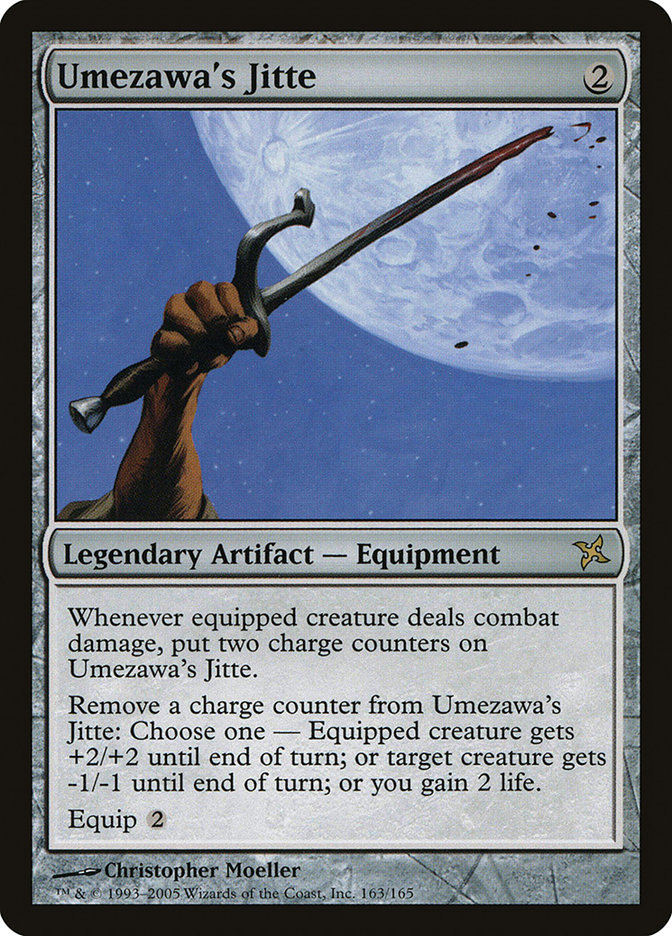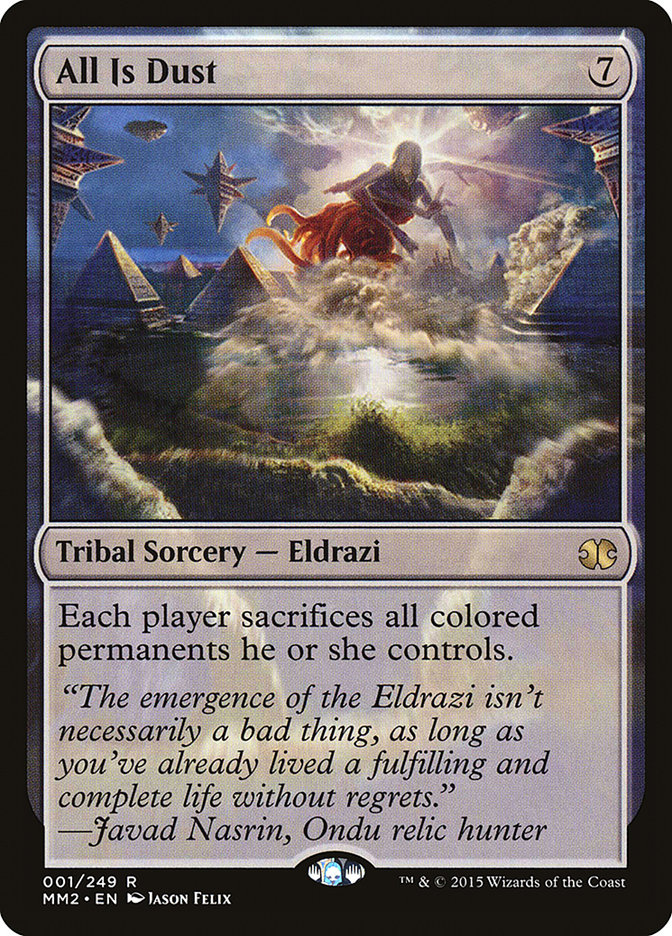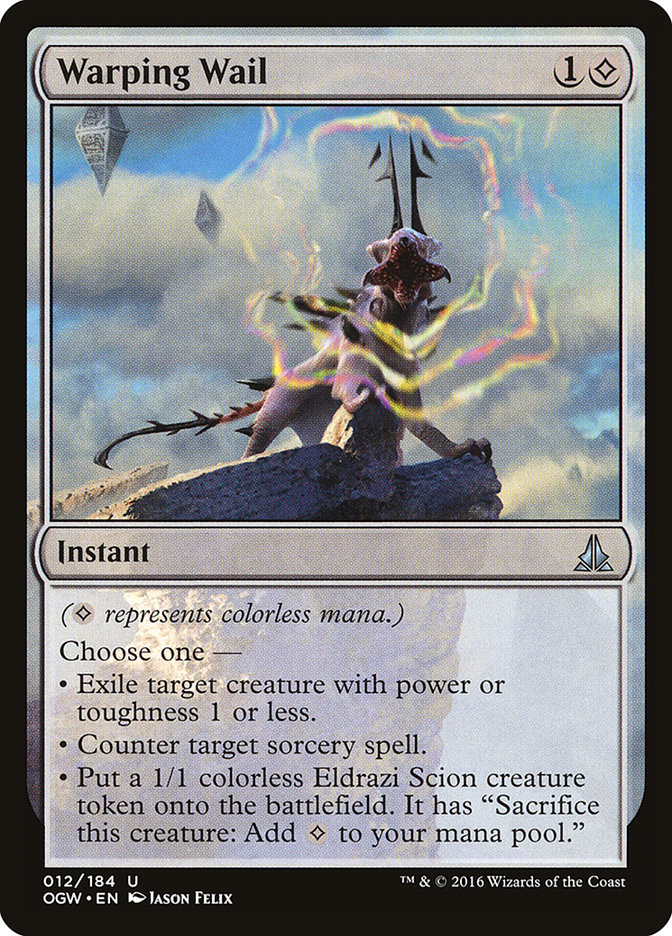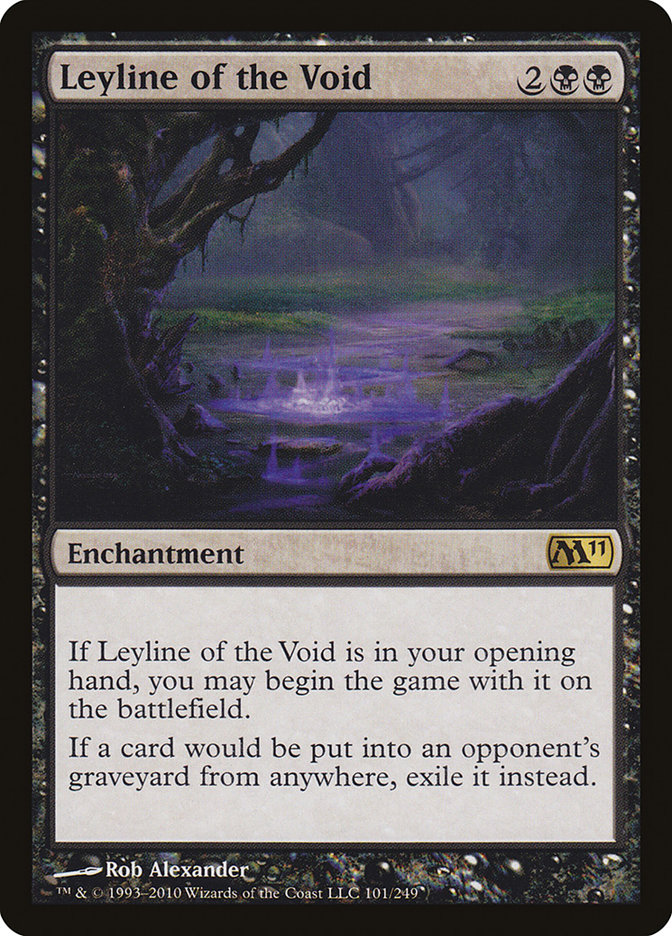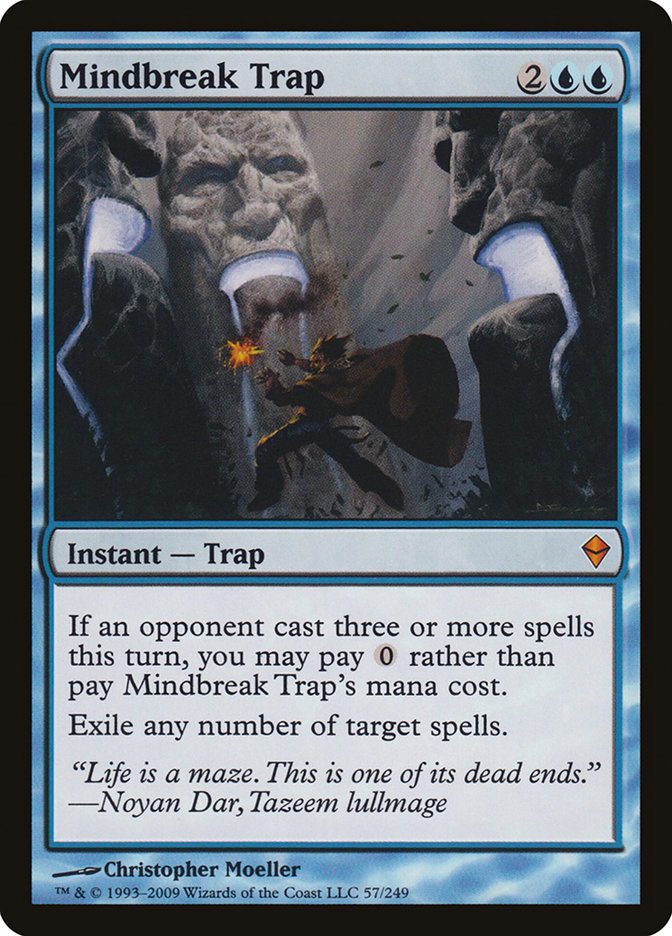My second article this week will focus entirely on the two formats for
Grand Prix Seattle. This weekend’s Grand Prix will feature both Legacy and
Standard, two formats I’ve had a lot of practice in over the last few
months. Legacy, in particular, was my format in the Team Open at SCG
Cincinnati just a few weeks ago, and I learned a lot in both testing and in
the tournament itself. On top of playing the games, I also saw the
archetype I played do very well, even if my experience wasn’t exactly
ideal.
Grixis Delver has taken over Legacy. Since the ban of Sensei’s Divining
Top, and the weakening of the Miracles archetype as a whole, Delver decks
have gotten a lot more popular. Thanks to boasting a relatively strong
combo matchup, Delver strategies in all forms are on the rise, but none are
as popular as Grixis Delver. But why is that?
For one, the threats are incredibly diverse. Not only do you need cheap
removal to kill stuff like Deathrite Shaman and Delver of Secrets, but you
also need to have answers to the threats they cast later in the game.
Gurmag Angler, Young Pyromancer, and True-Name Nemesis require
significantly different answers, and most of those answers cost more than
the removal necessary to combat the early aggression of both Deathrite
Shaman and Delver of Secrets.
But why Grixis Delver over Sultai? For one, Lightning Bolt is one of the
best removal spells in Legacy specifically because it can be directed at
the opponent’s head. Lightning Bolt kills most of the threats you need to
worry about, while your threats take various forms of evasion to deal the
last few points. Gurmag Angler is bigger than just about every other
creature in the format, and True-Name Nemesis is unmatched while on the
battlefield. And Young Pyromancer brings with it an entirely new set of
problems.
Sultai Delver is certainly a fine deck, but I think it gets outclassed in
the current age of Legacy. Spells like Hymn to Tourach are clunky and rough
on the mana. If you’re trying to abuse Daze, playing multiple copies of
Bayou over Tropical Island will cause some headaches. Throw some Wastelands
into the mix and your draws will occasionally be more awkward than you can
handle. Removal like Abrupt Decay lost a lot of value with the exit of
Counterbalance and the two-mana investment is actually asking a lot when
you’re trying to contain a bunch of one-mana threats.
Mana Advantage
Deathrite Shaman is the sole reason why the deck is built the way it is. If
you’re on the play with a Deathrite Shaman, your draw becomes significantly
better than your opponent’s, even if all their cards are the same. Being on
the play means your copies of Daze are turned on. It means your Wastelands
are better. It means every piece of disruption and pressure is amplified
because you’re hitting the battlefield first. If you’re on the play, you’re
losing on the card advantage front, but that’s not nearly as important as
the mana advantage front.
Legacy has always been a unique format, but the one aspect that rings true
throughout all of Magic is that the player with the most mana, or that uses
the most mana, is more likely to win the game. That’s why cards like
Llanowar Elves and Noble Hierarch keep showing up across all formats. And
with Llanowar Elves entering back into the Standard fray, I expect it to do
some serious damage.
Mana advantage being so important is also one of the reasons why I played
Maverick way back in the day. Not only did you have four copies of both
Green Sun’s Zenith (for Dryad Arbor) and Noble Hierarch, but you also had
access to disruptive elements, like Thalia, Guardian of Thraben, to punish
blue decks with a lot of non-creature spells. Aether Vial coupled with
Thalia, Guardian of Thraben is the main reason why Death and Taxes is a
deck in the first place. Both cards put your opponent at a serious mana
disadvantage, even though the cards in Death and Taxes are generally weaker
overall than other Legacy decks.
But finding a way to gain a mana advantage is also the reason why I’ve been
searching around for an alternate strategy. I don’t really want to play
Deathrite Shaman mirrors because being on the draw is an absolute
nightmare. Yes, Grixis Delver is the undisputed best deck in Legacy, but
that doesn’t mean it has no natural predators. And there are other ways to
gain mana advantages in the format.
Creatures (25)
- 3 Simian Spirit Guide
- 4 Endless One
- 2 Endbringer
- 4 Eldrazi Mimic
- 4 Reality Smasher
- 4 Thought-Knot Seer
- 4 Matter Reshaper
Lands (25)
Spells (10)
Sideboard

Oh, my old friends. How I’ve missed you.
Let me start by saying that this list could change significantly in the
next 24 hours. This list is fairly stock, but I’ve been wanting to try out
some different lines based on what I think the Legacy format is currently
about. Simian Spirit Guide, while allowing you to cast spells in a quicker
time frame, is a pretty mediocre card. The draw of a first-turn Chalice of
the Void is possibly too much to give up, but then why aren’t we playing
all eight Ancient Tombs and City of Traitors? In its place, I would like to
try out Mind Stone, as well as another copy of Endbringer.
Wasteland is another card I’m not sold on. I get the appeal of killing your
opponent’s land, and I know that it can be one of the best cards in the
deck in the right spot, but I also know that being on the draw means you’ll
almost never want to use it unless you somehow get insanely far ahead on
the battlefield. And if you’re doing that, taking your opponent off one of
their lands seems less valuable than capitalizing on the mana advantage
you’ve already gained. In the place of Wasteland, I would like to try more
copies of Mishra’s Factory, Urborg, Tomb of Yawgmoth, and the fourth Eye of
Ugin.
The Lands
Let’s get to why I want to play this deck in the first place.
Coupled with Sol Lands like Ancient Tomb and City of Traitors, this set of
lands is an easy way for you to gain a significant mana advantage in the
early game. These lands are the heart of the deck, giving it the speed it
needs to keep up with some of the more degenerate decks in the format, as
well as the mana advantage needed to fend off Wasteland, Deathrite Shaman,
and Daze.
Urborg, Tomb of Yawgmoth is here because it allows Eye of Ugin to tap for
mana, which essentially gives you an extra two-mana land when used in
conjunction. There are also some backdoor situations where taking damage
from Dismember could be a big deal, and will occasionally dig you out of
those jams. It can also allow Ancient Tomb to tap for mana in later turns
and not deal you damage if you’re in a racing situation.
As I’ve talked about already, Wasteland is certainly a fine card in a deck
like this. Keeping your opponent short on mana is huge when you’re ahead on
the battlefield, or when you want to keep them locked down under and early
Chalice of the Void. While I’m not sure if it will end up making the cut, I
do know that there’s a very good reason it has been in virtually every
Colorless Eldrazi list over the last two years. And because of this, I’m
hesitant to cut it, even though my gut is telling me to.
A creature-land can be useful in situations where you’re starting to flood
out. That’s why the Modern versions of this deck, before it was taken down
a peg, played Blinkmoth Nexus. Sometimes your draw doesn’t exactly line up,
and you start to run out of steam. Having access to lands that “do stuff”
is awesome because you don’t mind flooding out as much.
The two copies of Karakas in the list are strictly there to help in a few
tough matchups: Reanimator and Sneak and Show. These two decks, while on
the decline thanks to an influx in Grixis Delver, are pretty bad matchups
for Colorless Eldrazi. But if you happen to randomly draw your Karakas, you
can steal games on occasion. Coupled with the fact that you have a fast
clock and disruption, a single drawn Karakas could win you a match that you
have no business winning.
The Disruption
Chalice of the Void has always been a staple in decks like this one because
it gives you so many free wins. If you’re able to cast it on the first
turn, you end up outright winning some games where it resolves. The
two-mana lands and Simian Spirit Guide will help push it out quickly, but
there’s a cost to playing those cards. Both Simian Spirit Guide and City of
Traitors can put you in a pickle against the right draw from the opponent,
or the wrong draws from the top of your deck. And while you will steal
games with Chalice of the Void, you will often lose quite a few games to
your own deck’s shortcomings.
Thought-Knot Seer is the best card in this deck. It’s the reason to play
Eldrazi because it doubles as a threat and disruptive element. Creatures
that do disruptive things are generally the best card in any deck, because
putting a clock on your opponent while hitting them with some form of
disruption is the best path to victory against a combo or control deck.
While stuff like Reality Smasher or Endless One will hit pretty hard,
having the information of seeing your opponent’s hand and taking their best
card is invaluable.
The Threats
Reality Smasher puts a significant clock on them, rolls over the tokens
created by Young Pyromancer, and even attacks through True-Name Nemesis.
Their only threat that can match yours is Gurmag Angler, but I’m planning
on coming ready with some answers.
Both Endless One and Eldrazi Mimic are solely in the deck to give value to
Eldrazi Temple and Eye of Ugin, while also granting you the necessary speed
to race certain combo decks. Making large creatures won’t always win you
the game, but making large creatures on the second or third turn will often
give you the necessary speed to close games before the opponent has a
chance to stabilize.
Matter Reshaper is in the deck for a number of reasons, but it’s one of the
better early threats you can play because your opponent never wants to kill
it, block it, or attack into it. The threat of something bigger or better
looms on the top of your deck, and the card disadvantage from trading a
creature or removal spell is often too high for them to do anything about
it.
Endbringer has never been my favorite creature in the deck, and I’ve
honestly been considering cutting it from the Simian Spirit Guide version
of the deck. Playing more copies of Urborg, Tomb of Yawgmoth and Mind Stone
will make this card much more desirable, but I’m not a huge fan. I’ve been
wanting to try out Eternal Scourge, but I’m not sure if it’s worth it.
After all, this deck features a ton of mana sources, and Endbringer can
have a unique effect on a game.
The Removal
Four copies of Dismember. No remorse.
I also plan on trying more of some number of Urborg, Tomb of Yawgmoth to
help speed things up a bit at some point since they give you an out to
actually casting Dismember when you’re at a fairly low life total. But the
sweetest part of Urborg, Tomb of Yawgmoth is that it couples well with Eye
of Ugin, effectively allowing it to tap for three mana when casting your
giant Eldrazi (just so long as you have another source of colorless mana).
What I’ve noticed in recent weeks is that my life total in Legacy is rarely
something that matters. Cards like Gitaxian Probe feel like bee stings, so
I can only assume that dealing myself four points of damage isn’t a big
deal. Yes, it will bite me on occasion, but the upside of having a removal
spell for one mana in the colorless deck is much too high. You need to kill
Deathrite Shaman, and you also need a way to interact with creatures on the
first turn. You also want a good number of ways to clear out Gurmag Angler
so your large monsters can rumble on through.
Umezawa’s Jitte is something I’ve been wanting to play with for a while
now. With Young Pyromancer, Delver of Secrets, Deathrite Shaman, and a host
of other creatures flooding the format, Umezawa’s Jitte seems like a strong
card at the moment. And what better deck to utilize its strength than a
colorless deck featuring a ton of mana and ways to put it onto the
battlefield quickly?
Umezawa’s Jitte, while a powerful card in its own right, has been one of
those spells that’s often left to a one-of with Stoneforge Mystic or a
sideboard card for a midrange deck. Here, it serves a greater purpose in
closing games quickly or just shutting the door on small blockers.
The Benchwarmers
Obviously a powerful card, but one that I’ve gotten stuck in my hand too
many times. I know All is Dust is a solid answer to True-Name Nemesis, but
that’s virtually the only reason this card is in the deck in the first
place. While some people main deck All is Dust as a big, one-sided answer,
I like putting it in the sideboard for oddball scenarios. After all, how
reasonable is it to expect to cast All is Dust against a deck featuring
Wasteland, Spell Pierce, and Daze?
Another card that you see in the main deck quite often, I’ve opted to move
completely toward Dismember as my removal spell of choice. Yes, I’m a
little weaker to Show and Tell and a few other key sorceries, but the one
mana cost versus two mana cost makes a huge difference against Delver
opponents. Plus, Dismember can kill Gurmag Angler.
All the other versions of graveyard hate just don’t work against Dredge or
Reanimator. Either they’re too fast or have some way to kill artifacts
because you’re playing Chalice of the Void. Against both Reanimator and
Dredge, you’re likely to mulligan to an interactive card anyway, so why
shouldn’t that card be Leyline of the Void? After all, it’s not like you’re
playing Brainstorm or Ponder to dig for your piece of graveyard
interaction.
I don’t care. I hate Storm. I know that the two copies of Mindbreak Trap
are probably overkill, and they’re likely to hit me with a discard spell at
some point, but the odds of them having Duress in their deck after the
first game is pretty small (and especially so if they’re on the draw). My
gut says they’ll have ways to interact with Chalice of the Void and Thorn
of Amethyst, but won’t be able to beat the one-two punch of lock piece plus
Mindbreak Trap.
Preparing for Two Formats
So that’s it for Legacy. I’m probably going to play Colorless Eldrazi in
some form because I think it gives me the mana advantage I need to beat the
Deathrite Shaman decks. While being on the draw can still lead to some
beatings from them, thanks to Deathrite Shaman, Daze, and Wasteland, I
think that you’re favored against them. But we’ll just have to wait and
see.
As for Standard, I promised you on Tuesday that I’d show you my list. The
short answer is that I haven’t had time to play much Standard, and I don’t
think you care much about Pre-Dominaria Standard anyway. Who wants another
3,000 word explanation on why The Scarab God is broken? We get it, Brad.
Next week I’ll be back to talking about new decks with cards from
Dominaria, as well as testing Modern for Grand Prix Hartford, where I will
(very) likely be playing some form of Hollow One. Not only do I think it’s
the best deck right now, but I just love everything about it. If you want
to read up on the archetype, and missed my article from a few weeks ago,
you can find it here.
Now I’m off to catch a plane to Seattle. Wish me luck!




